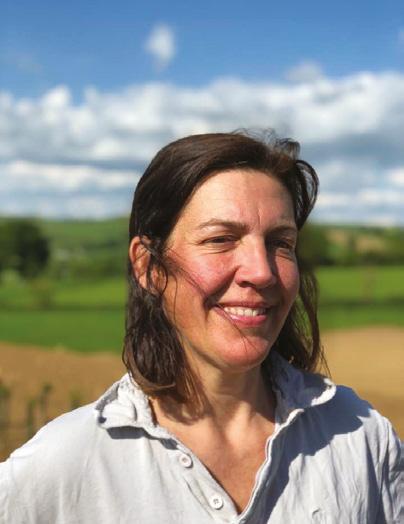
3 minute read
IN SEARCH OF NATURE
Simon Ford, Land and Nature Adviser
The first signs of spring are in the air and February is a time to look forward to planning trips in the warmer months ahead.
Advertisement
I am often asked for ideas of places to explore nature. We are very lucky that we live in such an interesting area with a mixture of different habitats nearby. I will try to give some ideas of places to visit that are less than an hour away from Sherborne.
Chalk Downland: This is one of our most precious places, particularly if you are interested to see wildflowers and butterflies. Many species of orchid, such as fragrant, common spotted, bee, butterfly and frog can be found, along with cowslips, wild thyme, autumn gentian and small scabious. Marbled white, small heath, common blue, as well as rare species such as the marsh and duke of Burgundy fritillary and grizzled skipper butterflies, can be seen. Skylark, meadow pipit, red kite and buzzard may be observed. Unfortunately, much of the downland has been ploughed up, but there are some wonderful places such as on the steep slopes around the Cerne Giant as well as Fontmell Down (National Trust) near Shaftesbury and Hambledon Hill (NT) near Blandford Forum are particularly worth visiting.
Hay Meadows: Traditional hay meadows are a beautiful sight, studded with flowers such as ox-eye daisy, field scabious, wild carrot, common spotted orchid, birds foot trefoil, sneezewort and common vetch. They buzz with bees and other insects and swallows and swifts hunt overhead. Over 97% of these fields have sadly been lost since the war, but there are some still remaining on the Golden Cap estate (NT) near Charmouth at Hilfield Priory near Minterne and at the Plantlife Nature Reserve at Ryewater, near Halstock. Perhaps the star of them all is Dorset Wildlife Trust’s Kingcombe nature reserve near Powerstock.
Woodland: We are not especially well endowed with woodland in this area and unfortunately many of our local woods have big ‘Keep Out’ signs on them.
In the spring, bluebells are in full bloom and there are primroses, early purple orchid, bugle, pendulous sedge and campion on rides. Chiffchaff, song thrush, whitethroat, coal tits, long-tailed tits, tawny owls and woodcock can be seen, while silver-washed fritillary and gatekeeper butterflies are attracted to bramble. The Woodland Trust’s Duncliffe Wood near East Stour is a great place to visit, as is High Wood and Pamphill at Kingston Lacy (NT) or the Dorset Wildlife Trust’s, Brackets Coppice near Halstock. For coniferous forests, try Puddletown Woods (Forestry Commission) or around King Alfred’s Tower at Stourhead (NT).
Wetland: Wetlands often have extensive areas of reeds, waving in the wind and may have large areas of open water and rhynes or drainage channels. Birds such as the reed warbler and reed bunting, little and great white egret and even marsh harrier and bittern can be seen. In the winter, amazing murmurations of starlings are almost akin to a black Northern lights as they move through the sky at dusk. If you are lucky, you may even come across cranes, which have been released and are now thriving in some areas. Ragged robin, brooklime, reedmace, sedges, marsh marigold, sphagnum moss and water lily may be seen and dragonflies are in abundance. For some of the best wetlands, it is best to cross the border into Somerset, where the Somerset Levels are particularly important as are places such as the RSPB and Natural England reserves at Ham Walls, Grey Lake and various sites around Glastonbury and Muchelney. Radipole Lake (RSPB) at Weymouth is also well worth a visit –remember your binoculars.
Heathland: Reading Thomas Hardy novels, many are set within the extensive areas of heathland that once covered eastern Dorset. Unfortunately, many of these have been lost to plantations and agriculture, but there are still some beautiful examples. Bell heather, common ling, western gorse, tormentil, broom and wood sage are key species and you may be lucky to see some of the reptiles that inhabit heath, such as adder, slow worm, common lizard or even sand lizard and smooth snake. The Dartford warbler is emblematic of heath and birds such as the cuckoo, nightjar and woodlark can occasionally be seen or heard. Late summer is a great time to visit when there is a purple haze of heather, dotted with golden gorse. Head for the Purbeck heaths near Corfe Castle (NT), Winfrith Heath near Wool (DWT) or Holt Heath near Wimborne (NT) for some particularly good examples.
These are just a few short examples of places to visit and things to see but I hope this gives you some inspiration. However, you do not need to travel far to see wildlife as we have some great things to see within walking distance. Happy exploring!









